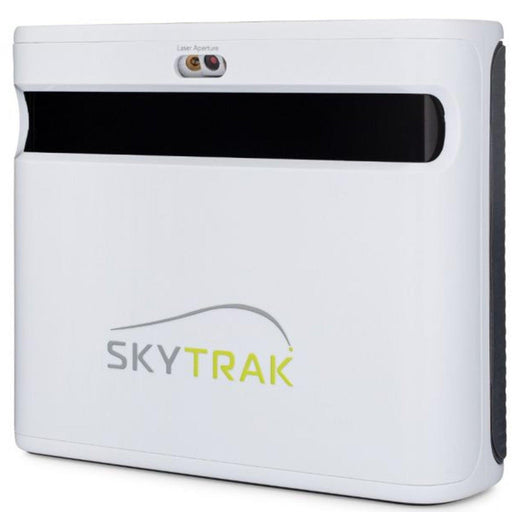Now through January 5th 15% OFF our very popular Vanish and Parlour Enclosures. Coupon code 15SWINGMASS

A DIY Guide to Simulator Enclosures
Transforming your space into a golf haven is now within reach with the DIY approach to golf simulator enclosures. In this step-by-step guide, we'll walk you through the process of creating your own golf sanctuary, providing the perfect backdrop for immersive and personalized practice sessions. Plus, discover budget-friendly options from Simply Golf Simulators to enhance your DIY project.
Step 1: Measure and Plan Your Space
- Begin by measuring the dimensions of your designated golf simulator area. Consider the height, width, and depth, ensuring that you have ample room for a comfortable swing. Plan the layout, keeping in mind the positioning of your simulator components.
Step 2: Select Suitable Materials
- Choose materials that strike a balance between affordability and durability. PVC pipes, conduit tubing, or metal framing can serve as the skeleton for your enclosure. Select durable netting or impact screen material to create a sturdy and effective barrier.
Step 3: Build the Frame Structure
- Construct the frame structure according to your measured dimensions. Assemble the PVC pipes or metal framing, creating a framework that accommodates both the impact screen and the golfer's range of motion. Secure the frame firmly to ensure stability during swings.
Step 4: Install the Impact Screen
- Affix the impact screen to the frame securely. Ensure that the screen is taut and free from wrinkles to provide a clear and realistic display of your virtual golf course. Consider using grommets or fasteners for easy removal and adjustment.
Step 5: Add Side Netting
- Enhance safety and containment by adding side netting to your DIY enclosure. This prevents stray shots and adds an extra layer of protection for your surroundings. Attach the netting to the frame, creating a barrier that complements the impact screen.
Step 6: Integrate Lighting and Ventilation
- Enhance your golfing experience by incorporating proper lighting and ventilation. Install LED lights for optimal visibility, especially if your simulator sessions extend into the evening. Ensure adequate ventilation to maintain a comfortable and enjoyable practice environment.
Step 7: Calibrate and Test
- Calibrate your simulator components to align with the dimensions of your DIY enclosure. Test the setup thoroughly, making adjustments as needed to optimize the accuracy of your launch monitor and the overall functionality of your simulator.
Step 8: Explore Budget-Friendly Options at Simply Golf Simulators
- Conclude your DIY project by exploring budget-friendly options at Simply Golf Simulators. Whether you need an affordable impact screen, high-quality netting, or additional accessories, Simply Golf Simulators offers a range of cost-effective solutions to complement your DIY golf simulator enclosure.
Crafting Your Golfing Retreat
In conclusion, building your DIY golf simulator enclosure is a rewarding journey that combines craftsmanship with a love for the game. With careful planning, affordable materials, and the right components, you can create a golfing retreat tailored to your space and preferences. Explore the budget-friendly options at Simply Golf Simulators to put the finishing touches on your project and elevate your home golfing experience. Happy crafting and swinging!

Have Questions About Golf Simulators?
Our expert team is here to help you find the perfect golf simulator for your needs.
Featured products
-
SkyTrak+
Original price $2,995.00 - Original price $3,145.00Original price$2,995.00 - $3,145.00$2,995.00 - $3,145.00Current price $2,995.00Introducing the SkyTrak+ Launch Monitor: Unmatched Accuracy and Advanced Features Experience a new level of precision and innovation with the SkyTr...
View full details -
ProTee Majestic Simulator Package
Original price $9,618.00 - Original price $13,848.00Original price$9,618.00 - $13,848.00$9,618.00 - $13,848.00Current price $9,618.00ProTee Majestic Golf Simulator Package: Elevate Your Indoor Golf Experience Transform your home or business into a golfer’s dream with the ProTee M...
View full details -
Eagle Golf Mat
Original price $370.00 - Original price $1,130.00Original price $370.00$370.00$370.00 - $1,130.00Current price $370.00Introducing the Eagle Golf Mat: The Ultimate Golf Experience Are you passionate about golf and demand nothing but the very best in your practice eq...
View full details -
Retractable HomeCourse® Golf ProScreen 180
Original price $2,299.00Original price $2,299.00 - Original price $2,299.00Original price $2,299.00Current price $1,999.00$1,999.00 - $1,999.00Current price $1,999.00HomeCourse® Golf ProScreen 180 HomeCourse® Golf ProScreen 180 is a retractable golf screen and enclosure. HomeCourse® Golf ProScreen 180's ballisti...
View full details -
The Augusta V2 4'x12' 2 Cups
Original price $399.00Original price $399.00 - Original price $399.00Original price $399.00Current price $329.00$329.00 - $329.00Current price $329.00The Augusta is one of Big Moss’ traditional models. It offers unmatched versatility for teaching and year round practice. Make a long-term investme...
View full details





